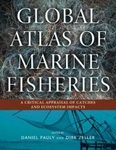![Modelling and Quantitative Methods in Fisheries Modelling and Quantitative Methods in Fisheries]()
Click to have a closer look
About this book
Contents
Customer reviews
Biography
Related titles
About this book
Revised and restructured, Modeling and Quantitative Methods in Fisheries, Second Edition provides an accessible introduction to quantitative methods in fisheries. This book features new material on tests and comparisons as well as new chapters on length-based models and estimating uncertainty using Bayesian methods. It presents a structured, step-by-step approach that introduces the material in a logical sequence. This text covers a range of topics such as simple linear regression, complex nonlinear modeling, methodology, and specific fields in fisheries. It also includes numerous real world examples implemented in Excel, with workbooks for all examples available for download on the web.
Contents
Fisheries and Modelling Fish Population Dynamics The Objectives of Stock Assessment Characteristics of Mathematical Models Types of Model Structure Simple Population Models Introduction Assumptions--Explicit and Implicit Density-Independent Growth Density-Dependent Models Responses to Fishing Pressure The Logistic Model in Fisheries Age-Structured Models Simple Yield-per-Recruit Model Parameter Estimation Models and Data Least Squared Residuals Nonlinear Estimation Likelihood Bayes' Theorem Concluding Remarks Computer-Intensive Methods Introduction Resampling Randomization Tests Jackknife Methods Bootstrapping Methods Monte Carlo Methods Bayesian Methods Relationships between Methods Computer Programming Randomization Tests Introduction Hypothesis Testing Randomization of Structured Data Statistical Bootstrap Methods The Jackknife and Pseudo Values The Bootstrap Bootstrap Statistics Bootstrap Confidence Intervals Concluding Remarks Monte Carlo Modelling Monte Carlo Models Practical Requirements A Simple Population Model A Non-Equilibrium Catch Curve Concluding Remarks Characterization of Uncertainty Introduction Asymptotic Standard Errors Percentile Confidence Intervals Using Likelihoods Likelihood Profile Confidence Intervals Percentile Likelihood Profiles for Model Outputs Markov Chain Monte Carlo (MCMC) Conclusion Growth of Individuals Growth in Size von Bertalanffy Growth Model Alternatives to von Bertalanffy Comparing Growth Curves Concluding Remarks Stock Recruitment Relationships Recruitment and Fisheries Stock Recruitment Biology Beverton--Holt Recruitment Model Ricker Model Deriso's Generalized Model Residual Error Structure The Impact of Measurement Errors Environmental Influences Recruitment in Age-Structured Models Concluding Remarks Surplus Production Models Introduction Equilibrium Methods Surplus Production Models Observation Error Estimates Beyond Simple Models Uncertainty of Parameter Estimates Risk Assessment Projections Practical Considerations Conclusions Age-Structured Models Types of Models Cohort Analysis Statistical Catch-at-Age Concluding Remarks Size-Based Models Introduction The Model Structure Conclusion Appendix: The Use of Excel in Fisheries Bibliography Index
Customer Reviews
Biography
Malcolm Haddon is a senior fisheries modeller for CSIRO in Hobart, Tasmania, Australia. Prior to joining CSIRO, Dr. Haddon was an associate professor at the University of Tasmania, head of fisheries at Australian Maritime College, a senior research fellow at the University of Sydney, editor of the New Zealand Journal of Marine and Freshwater Research, and a lecturer at Victoria University of Wellington. He has conducted stock assessments on Tasmanian rock lobster, giant crab, and abalone. Now at CSIRO, he continues to produce stock assessments of abalone but also for an array of Australian Commonwealth fisheries.
Handbook / Manual
By: Malcolm Haddon
449 pages, diagrams
Praise for the First Edition The book is a good introduction to modeling for students and practitioners. The emphasis is on population models, with chapters on parameter estimation, randomization tests, resampling methods, Monte Carlo methods, stock-recruitment, and age-structures models. One helpful feature is the use of spreadsheet examples to illustrate the methods. --Fisheries, 2002
















![Les îles Saint-Paul et Amsterdam (Océan Indien Sud): Environnement Marin et Pêcheries [Saint-Paul and Amsterdam Islands (South Indian Ocean): Marine Environment and Fisheries]](http://mediacdn.nhbs.com/jackets/jackets_resizer_medium/26/260268.jpg?height=150&width=107)


















